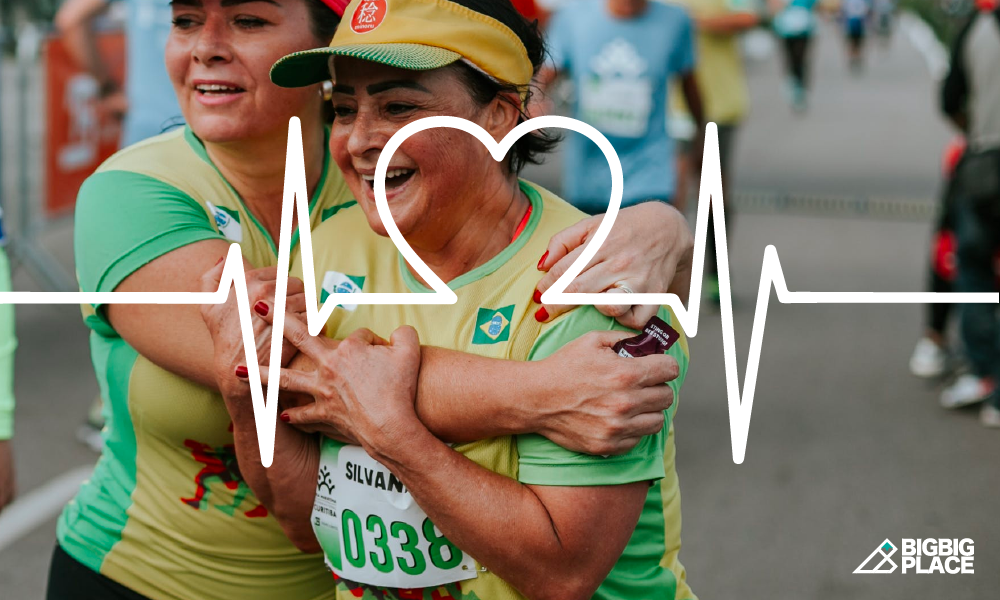Ask Your Heart How Hard You Are Training
- by Sandra Phoon
-

Did you know that a healthy heart will immediately drop its rate once you stop exercising? An unhealthy heart or an unconditioned body will cause your heart rate to remain high even after exercise has stopped! Did you also know that to burn fat, you should be exercising at a relatively low intensity? It is not all the time that you need to be huffing and puffing your lungs out during a workout. Sounds good? Read on!

Heart rate training is training based on how fast the heart muscles pump out blood to the rest of the body. Training with the knowledge of your heart zones will allow you to be conscious of the effort you are putting in. You will be able to adjust the intensity of your workout based on your goals and know when to push harder or back off on your effort.
Know Your Maximum Heart Rate
To know how hard we are training, we first need to know our heart rate zones. While there are various ways to know your average heart rate, we like to go with this equation:
207 – (0.7 X your age)
However, do note that there are many factors that can affect accuracy!
Once you’ve established your maximum heart rate, all you need to do is multiply it with a percentage. Use these percentages as a general guideline:
The Purpose of the Exercise
If fat loss is the goal, the optimal fat burning zone is relatively low because you want your body to be using fat as a fuel source instead of carbohydrates. By monitoring your heart rate, you will be able to know when you are over pushing and hence, scale down to a lower intensity but increase your workout period to at least 35 minutes. (So even though you are not bursting your lungs out, you need to be doing a longer workout hah!)
To improve athletic performance, you can opt for high-intensity interval training (HIIT). This type of training would get your heart rate up and then allow it to come back down before going at it again. This type of training helps boost endurance as well as increase the efficiency of how your heart uses oxygen during exercise. At the high-intensity bouts, you will be working your heart at Zone 4 (or the higher end of Zone 3) for short periods with recovery being typically as long as the high-intensity bouts.
The Benefits
It is safer!
Hitting zones near your maximum heart rate can be DANGEROUS especially if you are just starting out, if you are over 50 or if you have health complications such as heart disease and high blood pressure! By monitoring your heart rate, you will be able to know what zones you are at and know when to stop.
Avoid overtraining
Ensuring you are exercising according to your training plan at the appropriate intensities will avoid the issue of overtraining which can lead to demotivation and injuries.
Avoid plateau
Instead of overtraining, some of us might get “too comfortable”. This is because our body has gotten used to the regime and the effort. Monitoring your heart rate will allow you to know when it is time to switch things up in your training!
Maximizes the workout
Heart rate monitoring will help you ensure that you are exerting the appropriate amount of effort to accomplish the objective of the workout whether it is for fat loss or a HIIT workout.
Choosing Your Heart Rate Monitor
Watches with heart rate monitors can get pricey. Hence, when you are about to purchase one, keep these in mind!

What monitor type are you comfortable with?
Most monitors use sensors located on the chest strap or on the wrist. You should note that chest strap monitors are slightly more accurate compared to wrist-based heart rate monitoring. However, wrist-based heart rate monitoring may be more convenient.
What features do you need?
Check whether the heart rate monitor that you are purchasing has the features that you need. For example, average pace, distance, cadence, calorie burn or stride length. Some watches even send you heart rate alerts!
Our Pick!
We’ve picked a couple of our favorite gears to help you train better with your heart. Check them out!
Standalone option: Polar H10
When it comes to accuracy and connectivity, Polar H10 heart rate sensor is the go-to choice. You can use it with your handphone and also other fitness equipment such as watches, gym treadmills, or cycling computers that supports ANT+ or Bluetooth.
Watch: Suunto 9
The Suunto 9 comes equipped with the latest generation PerformTek 1.2 sensor from Valencell, which is one of the best optical heart rate sensors out there.
Great Bundle Option: Vantage V + Polar H10
If you are looking for a killer combo, get the Polar Vantage V with the Polar H10 at a really amazing price. With this combination, you can unlock the Training Load Pro feature that is calculated from your Heart Rate to help you rest and perform better during training.
So the next time you are exercising and want to know if you want to know if you are in the right zones, check your watch!



